آخرین مطالب «مقالات آزاد»
خانم دکتر آسیه احصایی(Cyclopentolate versus tropicamide on anterior segment angle parameters with optical coherence tomography in three refractive groups)
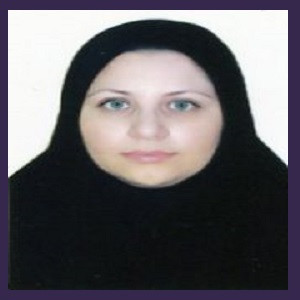
Cyclopentolate versus tropicamide on anterior segment angle parameters with optical coherence tomography in three refractive groups
Background and Aim: This study aims to compare the effects of cyclopentolate and tropicamide on anterior segment angle parameters using Optical Coherence Tomography (OCT) in three refractive groups in adults.
Methods: Sixty healthy individuals were recruited and assigned into three refractive groups according to inclusion criteria. At baseline visit, anterior segment angle parameters were measured using anterior segment OCT in the right eye. All measurements were repeated at two separate visits, one week apart, after administration of tropicamide 1% and cyclopentolate 1% at similar conditions. Anterior segment angle parameters were recorded at temporal areas (180 degrees).
Results: Sixty participants (29 men and 31 women, age: 27.82±4.71 years) completed the experiment. Baseline mean spherical equivalents were +1.52±1.20D, -0.04±0.33D and -1.91±0.91D in hyperopic, emmetropic and myopic groups, respectively. No statistically significant differences were found between tropicamide and cyclopentolate for all angle parameters in three refractive groups. Both drops exhibited an increase in all parameters in three refractive groups. Analysis between refractive groups revealed that a more hyperopic refraction was associated with less TIA, AOD and ACD parameters in baseline, after tropicamide and cyclopentolate instillations.
Conclusion: Topical application of cycloplegic eye drops in healthy individuals lead to significant increment of ACD and anterior segment angle parameters, regardless of refractive status. Moreover, lower values of ACD and anterior segment angle parameters in hyperopic individuals after administration of cycloplegic drops should be taken into account during biometric measurement and phakic IOL implantation. Due to shorter effect and recovery time and less ocular/systemic reaction of tropicamide versus cyclopentolate, tropicamide could be a recommended cycloplegic agent for diagnostic and therapeutic procedures.
Asieh Ehsaei1 *, Nasser Shoeibi 2 , Nasrin Moghadas Sharif 3 , Maryam Heydari 4 , Negareh Yazdani 3 , Somayeh Ghasemi-moghaddam 4
- 1.Department of Optometry, School of Paramedical Sciences, Mashhad University of Medical Sciences, Mashhad, Iran 2.Refractive Errors Research Center, Mashhad University of Medical Sciences, Mashhad, Iran
- Eye Research Center, Mashhad University of Medical Sciences, Mashhad, Iran
- 1.Student Research Committee, Mashhad University of Medical Sciences, Mashhad, Iran 2.Department of Optometry, School of Paramedical Sciences, Mashhad University of Medical Sciences, Mashhad, Iran
- Department of Optometry, School of Paramedical Sciences, Mashhad University of Medical Sciences, Mashhad, Iran

آقای علیرضا جمالی(ANNULAR INTRA-CORNEAL INLAY FEATURES)

ANNULAR INTRA-CORNEAL INLAY FEATURES
- Rehabilitation Research Center, Department of Optometry, School of Rehabilitation Sciences, Iran University of Medical Sciences, Tehran, Iran
Abstract: As proposed in 1978, the intra-stromal corneal rings began to use for myopia adjustment. The purpose of this method is to lessen the sphero-cylindrical refractive error by reducing corneal curvature and diminishing the higher-order aberrations due to increasing in corneal regularity. Today, the intra-corneal rings commonly uses for corneas with mild to moderate keratoconus, provided that the cornea has no central scar and the patient could not tolerate contact lenses. Inserting the rings inside the cornea increase the centrality of the corneal apex, thereby facilitating contact lens fitting and enhancing comfort as well as increasing in best corrected visual acuity. Changes in corneal situation is described by the Barraquer’s law, in which when a material is increased in the corneal periphery or decreased in the center of the cornea, a flattening effect is enhanced. Intra-corneal rings generally fall into two categories: 1.Intra-Corneal Ring Segments (ICRS) up to 355 degree arc such as Ferrara ring (Ferrara Ophthalmic Ltd.), Intacs (Addition Technology Inc.), and Keraring (Mediphacos Ltd.) 2. Intra-Corneal Continues Complete Rings including Myoring (Dioptex GmbH, Austria) and Annular Intra-Corneal Inlay (AICI, Ophthalight cor. Tehran, Iran). The AICI is available in 4 different thicknesses (140, 160, 180 and 200 microns) that will be selected depending on the corneal conditions. One of the features of AICI is that unlike Myoring, it is not flat and these rings are made in a curved shape with a base curve of 7.4. Therefore, due to the similarity close to the curvature of the cornea, it is expected that the changes created will be different from other rings. This study evaluates the structural features, patient selection and specific results following the AICI implant inside the keratoconic cornea.

آقای دکتر مسعود صادقی(CHITOSAN PROPERTIES AND ITS APPLICATIONS IN OPHTHALMOLOGY AND OPTOMETRY)

CHITOSAN PROPERTIES AND ITS APPLICATIONS IN OPHTHALMOLOGY AND OPTOMETRY
Abstract:خواص Chitosan و کاربردهای آن در چشم پزشکی و اپتومتری دکتر مسعود صادقی، دکتر عباس عظیمی خراسانی، دکتر پرستو تاج زاده، دکتر مریم عرفانی حقیری پس از سلولز، chitin فراوان¬ترین پلی¬ساکارید طبیعی در کره زمین و ماده تقویت کننده ساختمان سخت¬پوستان و حشرات و... است. chitosan مشتق اصلی chitin است که با حذف عامل استیل از نیتروژن (داستیلاسیون) بدست می¬آید. خصوصیات بیولوژیک chitosan به شرح زیر معرفی گردیده است: • سازگاری با بافت زنده: یک پلیمر طبیعی است؛ قابل تجزیه زیستی به اجزاء اولیه تشکیل دهنده است؛ ایمن و غیر سمی است. • با قدرت به سلولهای پستانداران و میکروبها می¬چسبد. • اثر بازسازی کننده روی بافت پیوندی لثه دارد. • تشکیل استئوبلاستهای مسئول ساخت استخوان را تسریع می¬نماید. • باعث توقف خونریزی می¬شود. • رشد قارچها را متوقف می¬کند • خاصیت اسپرم کشی دارد. • ضد تومور است. • اثر ضد افزایش کلسترول خون دارد. • تسریع کننده تشکیل استخوان است. • آرامبخش سیستم اعصاب مرکزی است. • تقویت کننده سیستم ایمنی است. کاربردهای Chitin وChitosan: ü عکسبرداری ü لوازم آرایش و گریم ü غذا و تقویت کننده¬ها ü مهندسی آب ü تهیه کاغذ ü تولید باطری خشک ü ساخت پوست مصنوعی ü سیستمهای دارورسانی ü بیوتکنولوژی ü چشم پزشکی: chitosan واجد کلیه خصوصیات مناسب برای ساخت یک عدسی تماسی ایده¬آل است از جمله: شفافیت اپتیکی، ثبات مکانیکی، اصلاح اپتیکی مناسب، قابلیت عبور گاز بخصوص درمورد اکسیژن، قابلیت خیس شدن و سازگاری ایمونولوژیک. فیلمهائی که از دپلیمریزه کردن نسبی و تخلیص chitosan تهیه شد از نظر اپتیکی شفاف، دارای مقاومت کششی و مقاومت به پاره شدن و قابلیت کشسانی مناسب بود و محتوای آب و قابلیت عبور اکسیژن مناسب داشت. قابلیت بسیار مناسب تبدیل chitosan به فیلم نازک در کنار خواص ضدمیکروبی و ترمیم کننده زخم، آن را کاندید مناسبی برای توسعه عدسی تماسی بانداژ می¬نماید. در این مقاله به مرور تعدادی از پژوهشهای مرتبط با این خواص پرداخته می¬شود.
Masoud Sadeghi1 *, Abbas Azimi Khorasani2 , Parastoo Tajzadeh2 , Maryam Erfani Haghiri3
- Shahid Beheshti university of medical sciences
- Mashhah university of medical sciences
- Razavi hospital, Mashhad-Iran

خانم شیوا باقری(Corneal densitometry in patients with severe delayed-onset mustard gas keratopathy versus patients suffered from chronic corneal scarring)

Corneal densitometry in patients with severe delayed-onset mustard gas keratopathy versus patients suffered from chronic corneal scarring
Background and Aim: Purpose: This study was performed to evaluate the corneal densitometric values extracted from Pentacam HR in two groups of delayed-onset mustard gas keratopathy(DMGK) and chronic herpes simplex corneal scarring.
Methods: Methods: This study included two groups, and each of them contained twenty eyes. All participants were examined using the Pentacam HR. Corneal densitometry was measured over a 12-mm diameter area, divided by annular concentric regions and depths. total corneal densitometry in the anterior, central and posterior layers and 0 - 2mm, 2 - 6 mm, 6 -10 mm and 10 - 12 mm annulus were extracted. Also the mean total densitometry of the cornea was evaluated.
Results: Results: the mean age of each patient in the DMGK and chronic corneal scarring group was 53.25 ± 5.95, 54.40 ± 17.20 years, respectively. Densitometry measurement in 10 to 12 mm in diameter in DMGK was significantly higher than chronic corneal scarring (DMGK=44.62±11.62, chronic corneal scarring=27.46±10.76, p=0.004). The mean value on the total corneal densitometry in severe DMGK group was more than the chronic corneal scarring (32.5±5.61, 28.01±8.15, respectively). There were not any significant differences in other densitometry values between the groups
Conclusion: Conclusion: because corneal densitometry is a parameter for the evaluation of corneal haze, our study showed that corneal opacity in the studied chemically injured group is probably higher than the other group and the peripheral ring of the cornea in patients with DMGK is more opaque.
Shiva Bagheri1 *, khosrow jadidi2 , Mohammad Aghazadeh Amiri1
- . School of Rehabilitation, Shahid Beheshti University of Medical Sciences, Tehran, Iran.
- Vision Health Research Center, Semnan university of medical sciences, Semnan, Iran

آقای مهرداد صادقی (THE USE OF IRPL LASER IN IMPROVING THE QUALITY OF TEARS IN PATIENTS WITH DRY EYE)
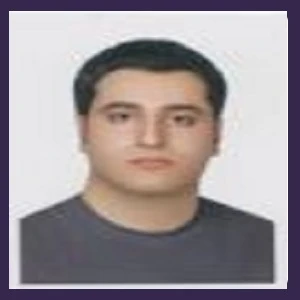
THE USE OF IRPL LASER IN IMPROVING THE QUALITY OF TEARS IN PATIENTS WITH DRY EYE
Clinical Research Development Unit of Imam Khomeini Hospitals -Dr. Mohammad Kermanshahi and Farabi-kermanshah university of medical science-kermanshah-iran
Abstract: Dry eye syndrome is a common pathology affecting between 5 and 15% of the population with symptoms increasing with age. Conditions of a modern lifestyle, including working on computer screens, driving cars, air conditioning, artificial lights, air pollution, wearing contact lenses etc, make dry eye syndrome a more and more frequent nuisance. Intense Regulated Pulsed Light (IRPL) The “E-Eye” is a device that generates a new type of polychromatic pulsed light by producing perfectly calibrated and homogenously sequenced light pulses. The sculpted pulses are delivered under the shape of regulated train pulses. The energy, spectrum and time period are

خانم نسرین مقدس شریف(Comparison of cyclopentolate versus tropicamide on corneal topography in emmetropic and myopic eyes)
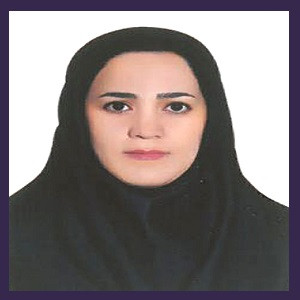
Comparison of cyclopentolate versus tropicamide on corneal topography in emmetropic and myopic eyes
Background and Aim: To compare the effect of cyclopentolate versus tropicamide eye drops on anterior surface corneal parameters using Keratograph 4 in myopic and emmetropic individuals
Methods: Fifty-eight participants included 29 emmetropic and 29 myopic individuals, were recruited, according to inclusion and exclusion criteria. At baseline visit, anterior surface corneal parameters were measured using Keratograph 4 in the right eye. All measurements were repeated at two separate visits, one week apart, after administration of tropicamide 1% and cyclopentolate 1% at similar conditions
Results: Of 58 participants who completed the study, 29 (24 women, 5 men, age: 23.82± 2.78 years) were emmetropic and 29 (21women, 8 men, age: 23.66± 2.76 years) were myopic. Baseline mean spherical equivalents were -0.23±0.23 D and -2.45±1.03 D in emmetropic and myopic groups, respectively. The analysis of the data showed a significant hyperopic shift following instillation of both cycloplegic eye drops in both refractive groups. However, tropicamide results was statistically insignificant in comparison with cyclopentolate (p=0.49). The assessment of data revealed no statistically significant differences in anterior surface corneal parameters in baseline, tropicamide and cyclopentolate instillation in each refractive group, except index of height decentration (IHD) value with tropicamide in myopic group (p=0.02). The further analysis between refractive groups also showed no significant differences in anterior surface corneal parameters in each session
Conclusion: Present study indicates that cyclopentolate and tropicamide do not appear to affect corneal topographic parameters and hence can be trusted to capture topography data
Nasrin Moghadas Sharif1 , Hadi Ostadi Moghadam 2 , Elham Azizi 3 , Elahe Ghoochani 3 , Asieh Ehsaei 4 *
- 1. Student Research Committee, Mashhad University of Medical Sciences, Mashhad, Iran 2. Department of Optometry, School of Paramedical Sciences, Mashhad University of Medical Sciences, Mashhad, Iran
- Refractive Errors Research Center, Mashhad University of Medical Sciences, Mashhad, Iran
- Department of Optometry, School of Paramedical Sciences, Mashhad University of Medical Sciences, Mashhad, Iran
- 1. Department of Optometry, School of Paramedical Sciences, Mashhad University of Medical Sciences, Mashhad, Iran 2. Refractive Errors Research Center, Mashhad University of Medical Sciences, Mashhad, Iran

آقای فرشید کریمی(Comparison of Intraocular Pressure Changes Due to Exposure to Mobile Phone Electromagnetics Radiations in Normal and Glaucoma Eye)

Comparison of Intraocular Pressure Changes Due to Exposure to Mobile Phone Electromagnetics Radiations in Normal and Glaucoma Eye
Background and Aim: To investigate the effects of electromagnetic waves (EMWs) emitted by a mobile phone on the Intraocular pressure (IOP) in the eyeball
Methods: This quasi-experimental study was conducted on 166 eyes from 83 individuals in the 40 to 70 age range who referred to “Khatam-al-Anbia Hospital,Mashhad,Iran” in 2016. There were two groups of participants, the first one consisted of 41 subjects who had normal eyes while the second one comprised 42 participants who suffered from open-angle glaucoma disease. The IOP in both groups was measured and recorded by a specialist before and after talking 5 minutes on the cellphone with the help of the Goldman method. Statistical analysis such as paired t-test and ANOVA was performed and all tests are statistically significant at (P < 0.05). For this purpose, the SPSS software (version 16) was applied
Results: IOP in the glaucoma eye (42 eyes) ipsilateral to mobile phone before and after the intervention was 18.64±6.7 and 23.53±6.3 respectively (p<0.001). But IOP in the control group (41 eyes) ipsilateral to mobile phone before and after the intervention was 12.95±3.5 and 13.39±2.8 respectively (p=0.063). IOP change in the opposite glaucomatous eye to mobile phone in glaucoma group (39 eyes) and normal group (44 eyes) was not significantly different before and after the phone call (p=0.065, p=0.85, respectively)Conclusion: we found that the acute effects of EMWs emitted from the mobile phones can significantly increase the IOP in glaucoma eye, while such changes were not observed in normal eyes
Farshid Karimi1 *, Shokoohi-Rad Saeed 2
- MSc. Department of optometry,Mashhad University of Medical Sciences, Mashhad
- MD;Assistant Professor of Ophthalmology;Eye Research Center ,Mashhad University of Medical Sciences,Mashhad ,Iran

ﺧﺎﻧﻢ ﺳﻮﻟﻤﺎز ﻣﻄﺎﻋﯽ(ESTERMAN VISUAL FIELD AND DRIVING)
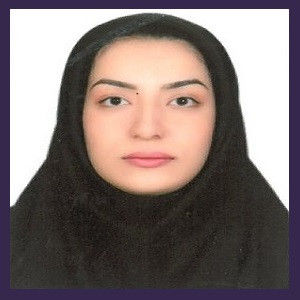
ESTERMAN VISUAL FIELD AND DRIVING
- mashhad university of medical scieces
Abstract: The Esterman program should be used for driving visual field assessments, and may be performed as a binocular or monocular test dependent on the patient’s visual acuity in either eye. A monocular Esterman test is suitable for monocular drivers and a binocular Esterman test is recommended for all binocularly sighted drivers. The monocular and binocular program assesses 100 and 120 points respectively. The target size is equivalent to a size III Goldmann target and the target intensity is 10 decibels. Esterman program should be performed with drivers’ typical prescription which they use for driving. Results are presented in printout including personal and instrumental information, reliability indices, a coding map, numbers of the seen and no seen points, Esterman efficacy score. Also in the binocular Esterman test, the patient’s fixation as part of the reliability indices should check by the practitioner during the test. The minimum field of vision for safe driving is defined as a field of at least 120 degrees on the horizontal that there should be no significant field defect within 20° of fixation either above or below the horizontal meridian and that there should be no significant scotoma close to fixation. It also reduces the risk of the Esterman visual field testing in drivers with advanced retinal and visual pathway diseases such as glaucomatous in severe stages and Homonymous or bitemporal defects to prevent accidents caused by efficient visual field.
soolmaz72@gmail.com 09166917422

خانم شادی اکبریان نیا(THYROID EYE DISEASE, DIAGNOSIS AND MANAGEMENT BY SETTING UP THE REGISTRY SYSTEM)
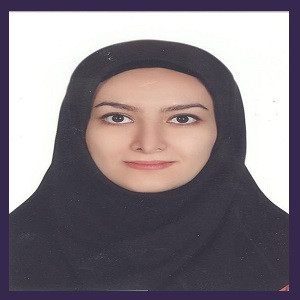
THYROID EYE DISEASE, DIAGNOSIS AND MANAGEMENT BY SETTING UP THE REGISTRY SYSTEM
- Iran University of Medical Sciences, Ophthalmic Research Center, Rassul-e-Akram Hospital
Abstract:
رجیستری بیماریها عبارتست از یک سیستم سازمان یافته که از روشهای مطالعات مشاهدهای برای جمعآوری اطلاعات کلینیکی استفاده میکند تا پیامدهای مشخصی را برای جمعیتی که دچار یک بیماری، عارضه یا مواجهه خاص هستند ارزیابی کند. بر اساس تعریف NIH یک طرح رجیستری راهاندازی میشود تا با انجام آزمایشات بالینی درک بیشتری نسبت به یک بیماری یا عارضه خاص ایجاد کند، روشهای درمانی یا الگوی رفتاری جمعیت را توسعه بخشد و چگونگی پیشرفت بیماری در آن جمعیت را بررسی کند، و موجب بهبود کیفیت مراقبتهای بهداشتی شده و آن را مانیتور کند. این سیستم برای بررسی دو گروه بیماریهای مزمن و نادر بیشتر قابل استفاده و کارآمد بوده است. از سوی دیگر تیروئید چشمی بطور معمول از علائم مبتلایان به بیماری گریوز میباشد و بطور کمتر شایع در بیماران هاشیموتو یا یوتیروئیدیسم ظاهر میشود؛ بطوریکه در ابتدای افتالموپاتی %90-80 از بیماران از پرکاری تیروئید و بقیه از یوتیروئیدیسم یا هایپوتیروئیدیسم رنج میبرند. بطور کلی شواهد بالینی تظاهرات چشمی در 50% از بیماران گریوز وجود دارد ولی تظاهرات زیربالینی که با استفاده از CT و MRI از اوربیت و یا اندازهگیری iop در حالت نگاه به بالا قابل ثبت میباشد، در بیش از 90 درصد از بیماران وجود دارد. مطالعات زیادی در جهت ارتباط نزدیک این علائم در مراحل مختلف بیماری و بسته به شدت آن با کیفیت زندگی فرد انجام شده که موید تاثیرپذیری شدید زندگی افراد مبتلاست. به همین منظور با توجه به ویژگیهای بیان شده برای این بیماری، سیستم ثبت روش مناسبی در نظر گرفته شد تا بتوان در جهت تشخیص زودرس بیماری، درمانهای به موقع و بررسی و شناخت فاکتورهای محیطی تشدیدکننده در مناطق مختلف ایران، سطح آگاهی تخصصی و عمومی و نیز کیفیت زندگی افراد را ارتقا بخشید، و ابهامات در آمار میزان شیوع و بروز آن را در جمعیت ایرانی تا حد زیادی بهبود داد.
Shadi Akbarian Nia1 *, Dr. Mohsen Bahmani Kashkooli1

آقای علیرضا جمالی(ELECTRORETINOGRAPHY IN GLAUCOMA DIAGNOSIS)

ELECTRORETINOGRAPHY IN GLAUCOMA DIAGNOSIS
- Rehabilitation Research Center, Department of Optometry, School of Rehabilitation Sciences, Iran University of Medical Sciences, Tehran, Iran
Abstract: Glaucoma is a progressive optic neuropathy, and structural damage to the optic nerve is directly responsible for loss of vision. The importance of structure and function in glaucoma is relevant for diagnostic and prognostic purposes. In addition to clinical examination and pressure monitoring, several diagnostic modalities may be used to gather information on the relative health of the eye. For instance, fundus photographs are used to observe and monitor the optic nerve (for analysis of structure), while visual field testing provides insight into the functional losses a patient may be experiencing due to his or her glaucoma. Both tests provide important pieces of information, despite their output and interpretation being highly subjective. In recent years, optical coherence tomography (OCT) has become an important tool for assessing glaucoma. Studies indicate that loss of ganglion cells at the optic nerve may be observable on OCT before functional vision loss is demonstrated on visual fields. Another diagnostic modality, the electroretinogram (ERG), has great utility for detecting the earliest signals of glaucoma, even before they are visible on OCT. Electroretinography is a minimally invasive technique that provides a direct, objective assessment of retinal function. The pattern reversal ERG (PERG) and the photopic negative response (PhNR) of the cone-driven full-field provide objective measures of retinal ganglion cell function and are all sensitive to glaucomatous damage. Recent studies demonstrate that a reduced PERG amplitude is predictive of subsequent visual field conversion (from normal to glaucomatous) and an increased rate of progressive retinal nerve fiber layer thinning in suspect eyes, indicating a potential role for PERG in risk stratification. Converging evidence indicates that some portion of PERG and PhNR abnormality represents a reversible aspect of dysfunction in glaucoma. This study evaluates the characteristics of PERG in patients with suspected glaucoma.

خانم نرگس فیروزی (PHARMOCOLOGY IN OPTOMETRY)
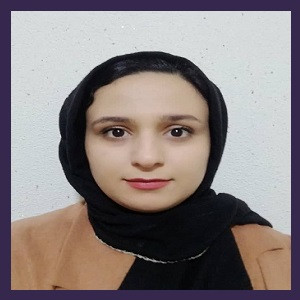
PHARMOCOLOGY IN OPTOMETRY
- MSc student ,Iran University of Medical Science
Abstract: فارماکولوژی در اپتومتری نرگس فیروزی ، دانشجوی کارشناسی ارشد اپتومتری ، دانشکده علوم توانبخشی ، دانشگاه علوم پزشکی ایران 09377916243 Firouzinarges74@gmail.com اپتومتریست ها به عنوان مراقبین اولیه ی سلامت چشم موظفند دانش کافی در مورد کاربرد و فارماکولوژی بالینی داروهای چشمی داشته باشند . دانش فارماکولوژی یکی از مهم ترین مسائل تاثیرگذار در مدیریت بیماران چشمی ست . داروهای مختلفی در کار بالینی چشمی به کار برده میشوند . بعضی از این داروها جهت تشخیص کاربرد دارند مانند سیکلوپلژیک ها ، میدریاتیک ها ، بی حس کننده های موضعی و رنگ ها . دسته ای از داروها کاربرد درمانی دارند که هرچند تجویز دارویی جزو شرح وظایف اپتومتریست ها در ایران نمی باشد ولی اطلاع از کاربرد درمانی داروها در مدیریت بیماران بسیار مهم است که از این جمله می توان آنتی بیوتیک ها و داروهای مربوط به درمان گلوکوم و فشار چشم را نام برد . با توجه به رشد روزافزون خشکی چشم هر اپتومتریست باید انواع لوبریکانت ها و کاربرد آنها را نیز بداند . در انتها طرز به کارگیری انواع مختلف دارویی مثل پمادها و قطره های چشمی نیز باید به طور صحیح به بیماران آموزش داده شود و یک اپتومتریست باید به طور کامل از آن مطلع باشد . واژگان کلیدی : فارماکولوژی ، داروهای تشخیصی ، داروهای درمانی ، لوبریکانت ها ، طرز استفاده ی داروهای چشمی

آقای مهرداد صادقی (A case report of unilateral myopia due to penetrating trauma)
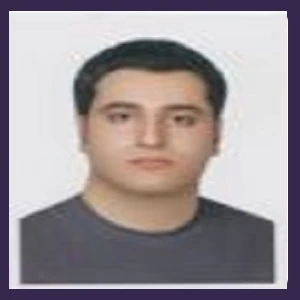
A case report of unilateral myopia due to penetrating trauma-1
Clinical Research Development Unit of Imam Khomeini Hospitals -Dr. Mohammad Kermanshahi and Farabi-kermanshah university of medical science-kermanshah-iran
Background and Aim: Purpose:Unilateral myopia is defined as a condition that amount of myopia in one eye is greater than in the other and the difference in myopia is high It results in a reduction of UCVA vision in one eye over the other. This can be congenital or acquired. Because accomodation in both eyes at the same time ,creating myopia unilaterally is important to someone who has never had myopia before
Methods: Observation: Accomodative Spasms (psuedo myopia) are far rarer than accomodative spasms (pseudo myopia) .We report a case of penetrating trauma (caused by a broken glass) leading to unilateral myopia
Results: Unilateral accommodative spasm is far rarer than bilateral accomodative spasms that numerous cases have been reported so far and in every report a special cause It is expressed for it. Factors such as head trauma, blunt eye trauma , psychological disorders , neurological disorders , Same as multiple sclerosis, drug side effects, and topical eye diseases(Iridocyclitis) Is mentioned for it
Conclusion: numerous cases of unilateral myopia have been reported so far ,each report has a specific reason is expressed for it: factors such as head trauma, blunt eye trauma, psychological disorders, like multiple sclerosis , drug side effects, topical eye diseases(Iridocyclitis) Is mentioned for it. So according to our reviews penetrating trauma to the glass can stimulate the nerve of the ciliary muscle, resulting in unilateral myopia
Mehrdad Sadeghi1 *, jalil omidian1
